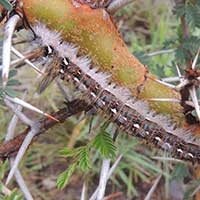Red Acacia / Shittah
Acacia seyal
(Acacia hockii)
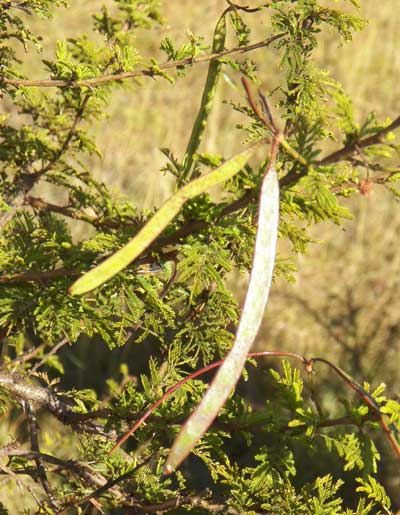
Observed in a pasture area near Eldoret, Kenya. January 2012. I am reasonable certain ot this plant's identification. Some authorities have moved this and related acacias to Vachellia.
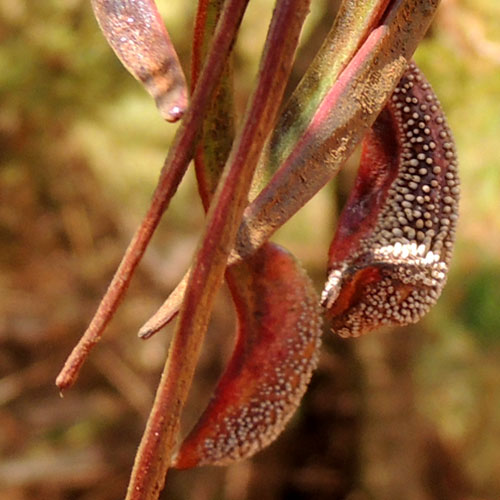
The developing seed pods play host to one or more species of gall-causing insects. The swollen pod segments may be strangely hirsute or else bright red and are probably caused by the larvae of chalcidoid wasps less than 2 mm long. On a future trip I hope to collect some galls and examine the emerging insects. Eldoret, December 2012.
FLOWERS: Yellow-orange flowers small and densely packed into spherical
clusters. Color is from the stamen filaments.
SHRUB or TREE: Scrubby plant on rangeland. Typically trees have reddish,
powdery bark, but some varieties have greenish-yellow and peeling bark bark.
This was once used to distinguish A. hockii from A. seyal.
Left undisturbed it reaches tree size.
LEAVES: Leaves are twice compound with the ultimate segments quite small
so the leaves appear feathery.
RANGE: This plant is native, but because it is resistant to cattle and
goats it is often abundant in poorly managed pastures. Found at mid elevations
up to 2000m.
FRUIT: The bean pods are slender and flattened. The seeds remain
attached to the pods by slender threads for a while after it splits opens.
ARMED. The paired, straight spines are variable in length and
typically gray to white in color.
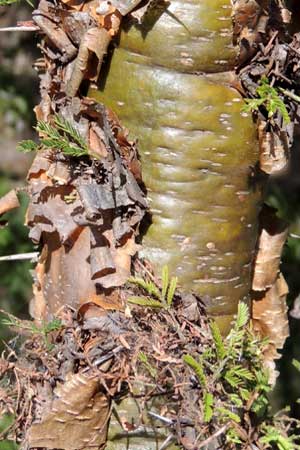
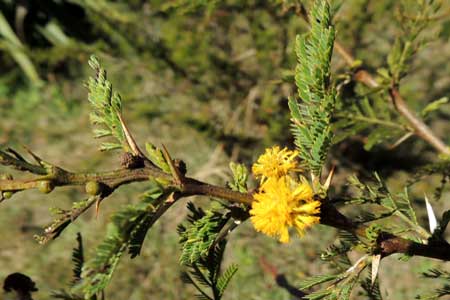
Fabaceae -- Bean Family -- Mimosoideae - Mimosa Sub-Family
More Information:
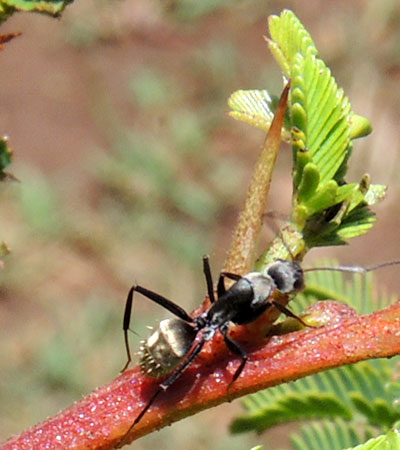
Ants, such as the Carpenter Ant above, play a role in this and other acacias dominance on overgrazed pastures. The ants get sweet sustanence from glands on new buds and help defend the plant from herbivorous insects.
